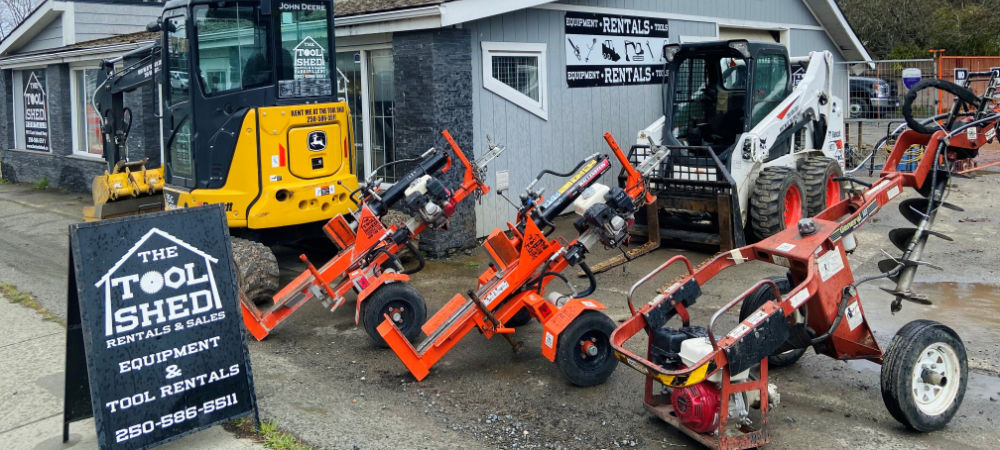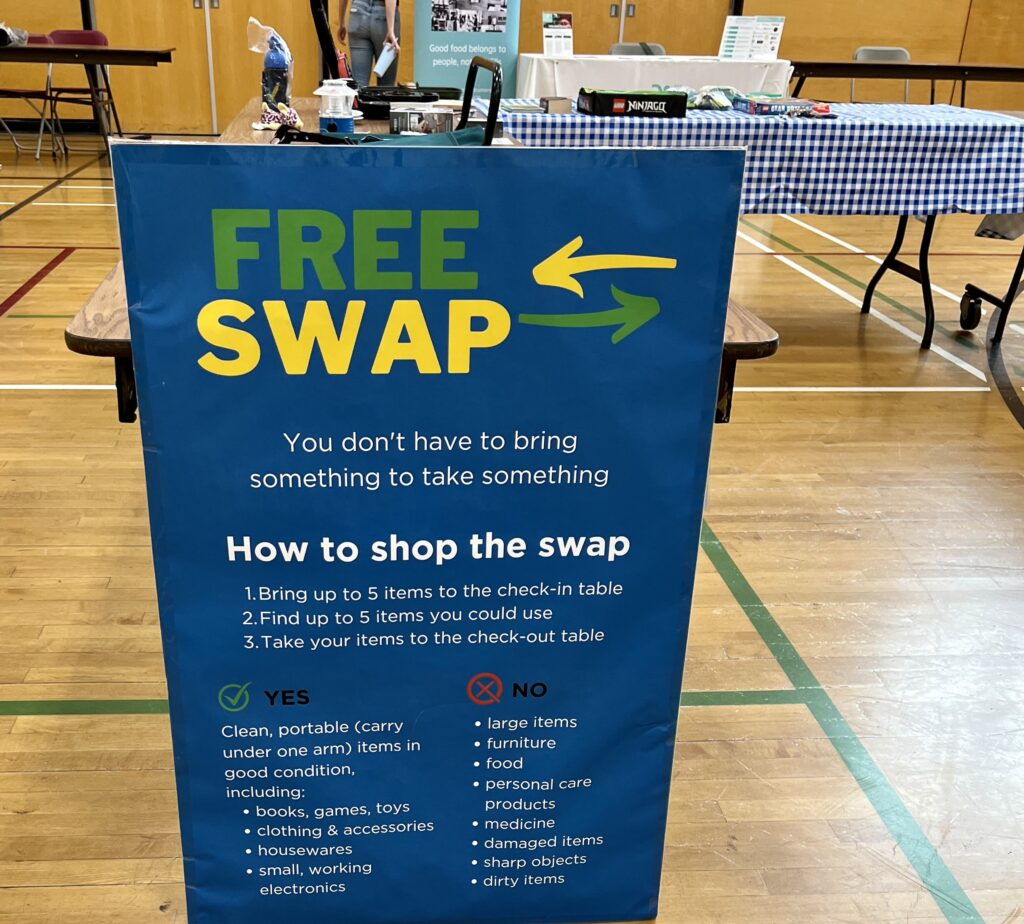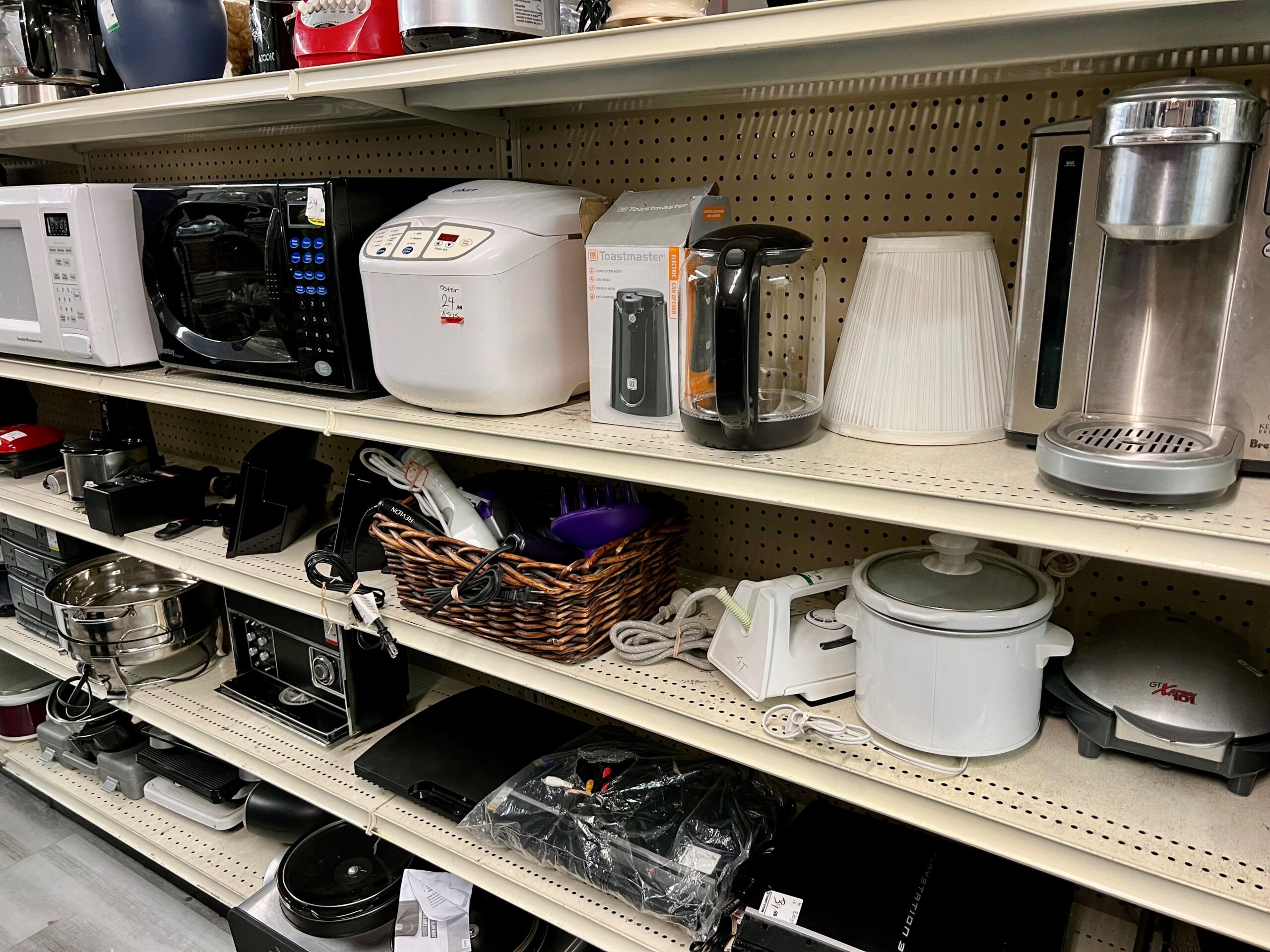Are you taking part in Secondhand September? We encourage you to include small appliances and power tools in the challenge! Originally focused on clothing, Secondhand September’s key efforts can be applied across many everyday items – including coffee makers, crock pots, and drills. Reduce your environmental impact by taking part in Secondhand September and try expanding the initiative throughout the year. Here are four ways you can join the movement by incorporating secondhand options for your small appliances and power tools, all while reducing waste and conserving resources.
Thrifting and Secondhand Shopping
The OG of Secondhand September. Thrift stores and garage sales can be treasure troves of small appliances and power tools. When you shop for secondhand items, you not only save money but also reduce the demand for new manufacturing. Here’s how to make the most of thrifting:
Thrift Stores: Visit your local thrift stores or consignment shops to find a wide variety of used appliances and tools. These items are often priced at a fraction of their original cost.
Online Marketplaces: Platforms like eBay, Craigslist, and Facebook Marketplace also offer a plethora of secondhand appliances and tools. Be sure to meet sellers in safe, public locations and thoroughly inspect and test items before purchasing.
Garage Sales – Regular and Supersized: To encourage reuse and reduce waste, some communities hold large garage sale days or weekends. As a bonus they are also a great way to foster neighborly connections! For example:
- City of Coquitlam’s City Wide Garage Sale and Giveaway Event
- Fort St John has an ongoing Garage Sale Map
- Fernie Community Yard Sale Day
- Sooke Annual Seaparc Leisure Complex Garage Sale
- Kettle Valley Neighborhood Garage Sale in Kelowna
- Whistler AWARE Community Garage Sales
Renting Small Appliances and Power Tools
One of the most effective ways to minimize the demand for new products is by renting items when you need them. Especially those that you only need once or twice a year. For example, a tile cutter for a home improvement project, or a carpet cleaner for a deep clean. Here’s how you can get started.
Local Shops That Rent: Check out your nearby hardware stores, home improvement centers, and tool rental companies. Home Depot locations commonly rent tools, and many local operations exist too. For example, there is rentalnetwork.ca for the Howe Sound corridor, The Tool Shed in Parksville, and for the Lower Mainland there are quite a few including A&B Tool Rentals or Kerrisdale Equipment.

Specialized Kitchen or Event Rental Companies: If you’re hosting an event and need extra hot plates, electric griddles, or convection ovens reach out to a local company for short-term use. Browse their catalogs, order what you need, and have it delivered to your doorstep.
Free Swaps
Swapping small appliances and power tools with friends, family, or neighbors is not only cost-effective but also eco-friendly. Here’s how you can initiate a successful swapping experience:
Connect with Your Network: Reach out to your social circle or local community groups to see if anyone is interested in getting rid of the item you need, or if they would be interested in a temporary swap.
Online Swapping Communities: Platforms like Freecycle, Nextdoor, and Craigslist are excellent resources for connecting with others who are willing to trade items or have items for free. Additionally, check out local Facebook Buy Nothing Groups, Free Groups, and Facebook Marketplace for free options.
Community Swaps: Check if your municipality or local neighborhood association is organizing any Swap events. The City of Vancouver is now trying out Free Swap Events! The next Free Swap is scheduled for October 14th in Kitsilano.

Borrowing and Sharing Initiatives
Sure, they’re not exactly revolutionary, but reviving these practices do lots of good when it comes to reducing the need for new items. It can be as simple as asking a neighbor or co-worker to temporarily use their power drill or kitchen mixer. Make sure to communicate clearly about the terms of borrowing, including the duration, care, and potential repairs if something goes wrong. Here are some options.
Create a Borrowing Network: Establish a network of friends or acquaintances who are open to lending and borrowing small appliances and tools among each other.
Tool Libraries: Have popped up to allow community members to borrow from a bank of tools. Current initiatives exist in Victoria, Vancouver, and the Kootenays.
Libraries of Things: Some municipal libraries are starting to provide a ‘library of things’ section, like in Terrace and Nelson. Although there are not usually many small appliances in these, we encourage you to check them out for other useful items beyond books.
Overall, participating in the Secondhand September Challenge by incorporating small appliances and power tools into your sustainable living practices is a win-win. You not only reduce your environmental impact but also save money and support the circular economy. That being said, we recognize that not all secondhand finds will be treasures. Receive a secondhand item that’s not in as good of shape as you expected? Remember it can be revived at a Repair Cafe! Repair Cafes are community gatherings where visitors bring in broken household items to be fixed for FREE, or for a small donation.
Whether you choose to rent, swap, borrow, or thrift, you’ll make a positive contribution to the environment and can inspire others to do the same. Let’s all take a step toward a more sustainable future, one small appliance and power tool at a time!




Comments